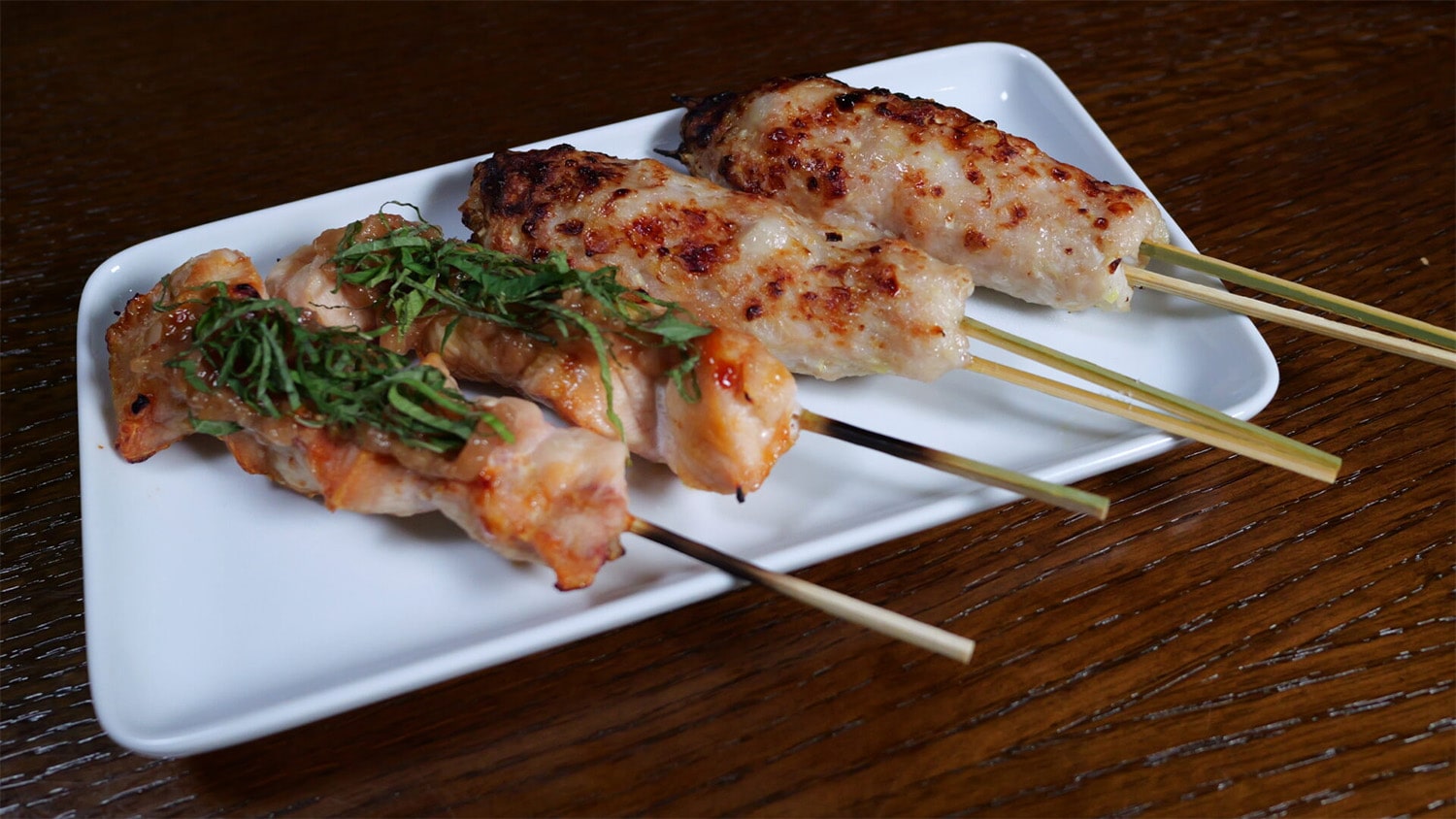
33 interesting facts about Yakitori
- 👁️ 321
Yakitori, a popular Japanese dish that has charmed food enthusiasts worldwide, is much more than just skewered chicken. Its simplicity belies a depth of flavor and tradition that spans centuries, embodying the essence of Japanese cuisine’s meticulous preparation and presentation. Yakitori can be found everywhere in Japan, from street vendors to upscale restaurants, each offering their unique take on this beloved dish. It is not only a culinary delight but also a cultural experience, bringing people together over the shared enjoyment of food. Here are 33 interesting and informative facts about Yakitori that showcase its rich history, variety, and significance in Japanese culture.
- Yakitori literally means “grilled chicken” in Japanese, derived from “yaki” (grill) and “tori” (bird).
- It originated in the Edo period (1603-1868) when the consumption of meat became more common in Japan.
- Traditional yakitori is made with various parts of the chicken, including the breast, thigh, skin, liver, and heart.
- The skewers used for yakitori are typically made of bamboo or metal.
- Yakitori is traditionally grilled over binchotan, a type of white charcoal known for its ability to cook food evenly without producing smoke.
- There are two main styles of yakitori: salted (shio) and glazed with a soy sauce-based sauce (tare).
- The tare sauce can be unique to each yakitori establishment, with recipes closely guarded and passed down through generations.
- Vegetables, such as bell peppers, onions, and mushrooms, are also often grilled as part of a yakitori menu.
- Yakitori bars, known as “yakitori-ya,” are popular gathering spots in Japan for casual dining and drinking.
- Some yakitori chefs specialize in using every part of the chicken, a practice known as “nose-to-tail” cooking.
- Besides chicken, other meats and seafood can be prepared in the yakitori style, although this is less traditional.
- The preparation of yakitori involves precise cutting techniques to ensure uniform cooking and presentation.
- Yakitori skewers are often turned only once on the grill to achieve the perfect char and tenderness.
- A common custom at yakitori-ya is ordering skewers in rounds, allowing diners to try a variety of flavors throughout the meal.
- The term “kushiyaki” is a broader category that includes yakitori and other skewered and grilled foods.
- Some yakitori-ya have a “no sauce” policy for certain skewers to allow the natural flavors of the chicken to shine.
- Tsukune, a type of yakitori, is made with minced chicken formed into balls or patties, often with added ingredients like green onions or shiso leaves.
- High-end yakitori restaurants may age their chicken to deepen the flavor before grilling.
- Drinking sake or beer with yakitori is a common pairing in Japan, enhancing the dining experience.
- The meticulous arrangement of skewers on the grill is considered an art form, reflecting the chef’s skill and attention to detail.
- Specialized yakitori grills are designed to provide even heat distribution and ventilation.
- Some yakitori-ya offer omakase-style menus, where the chef selects and serves skewers based on the best available ingredients.
- In Japan, yakitori is not only enjoyed at restaurants but also commonly prepared at home for gatherings and special occasions.
- The price of yakitori can vary significantly, from affordable street food to gourmet dining experiences.
- Seasonal ingredients are often featured in yakitori dishes, reflecting Japan’s appreciation for seasonal changes.
- Yakitori chefs often engage in friendly conversation with patrons, adding to the communal atmosphere of yakitori-ya.
- Leftover yakitori tare sauce is sometimes used to cook other dishes, infusing them with its rich flavor.
- Some regions of Japan have local variations of yakitori, incorporating local flavors and ingredients.
- The smoky aroma of yakitori grilling is a quintessential scent in many Japanese streets and festivals.
- Eating yakitori is a social activity, often enjoyed in groups as a way to unwind and relax.
- The act of grilling yakitori requires constant attention and quick adjustments to ensure perfection.
- Food critics and enthusiasts often seek out yakitori-ya known for their unique recipes and grilling techniques.
- Yakitori reflects the Japanese principle of simplicity and perfection, aiming to bring out the best in each ingredient.
Yakitori is more than just a dish; it’s a reflection of Japanese culture’s intricacy, precision, and communal spirit. From its humble beginnings to its current status as a beloved staple, yakitori embodies the depth and diversity of Japanese cuisine. Its ability to bring people together, combined with the skill and passion of those who prepare it, ensures that yakitori will continue to be cherished both in Japan and around the world.
Yakitori, a popular Japanese dish that has charmed food enthusiasts worldwide, is much more than just skewered chicken. Its simplicity belies a depth of flavor and tradition that spans centuries, embodying the essence of Japanese cuisine’s meticulous preparation and presentation. Yakitori can be found everywhere in Japan, from street vendors…